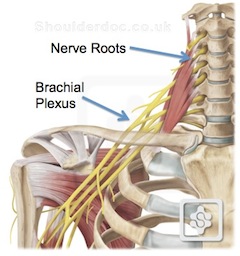Our relationship with pain
As I was driving home from dropping the kids off at school, I heard on the radio a doctor speaking about seniors and addictions. He was also speaking about addiction in general and how the majority of addiction stems from our relationship with pain. Although he lightly touched on this subject, I thought it was very intriguing. What is our relationship with pain?
Let me throw some numbers at you. 5.1 million Americans reported use of prescription pain killers for non-medical purposes. That data was collected in one month. The World Health Organization estimates that approximately 2 million people in the United States alone are addicted to prescription opiates. 3 out of 10 teens do not believe that prescription opiates are addictive. 1 in 12 high school seniors reported past-year non medical use of prescription pain reliever Vicodin. The total number of opiate prescriptions dispensed by retail pharmacies in the US rose from 76 million in 1991 to 210 million in 2010. The abuse of opiates has been on the rise, but why? It's because of our relationship with pain.
When you hear the word "pain" do you see that as a negative word or a positive word? When I was in school we were taught not to use the word "pain" and instead say "discomfort" because when we would say "pain" it triggered a negative response instead of a constructive one. From a young age, we are taught to fear pain, because well, it hurts! It's not fun or enjoyable. We have become a people of comfort. A people so focused on having a good time, that we are now afraid to feel pain whether it be physical, emotional, or psychological. This has also turned us into a people of addiction.
One of the reasons I became a massage therapist is because I wanted to help people be healthy. However after interning at a hospital for 8 months, I discovered that western medicine is doing it all wrong. Yes, emergency medical procedures are vital, and I respect that as a needed part of our society. However, I also saw many people who could have been quickly fixed, but they spent weeks, and countless thousands of dollars on unneeded treatment and drugs. ( Bear with me as my granola crunching hippie side comes out.) I discovered alternative medicine provided a preventative and long term solution to many ailments.
The use of pain killers is getting out of hand. When I went in to get my wisdom teeth out a year ago, I was prescribed a month worth of Vicodin to help with my pain. On average it takes about three days to recover from getting wisdom teeth out. Doctors more and more are prescribing outrageous amounts of pain killers as compassion treatment. They don't want people to be uncomfortable, so they cover up the pain with opiates, but this only exacerbates the problem. Our bodies feel pain because there is something wrong. It's crying out for help. By taking opiates, it just covers up the discomfort, however the problem is still present. An extreme metaphor would be to take a crying baby and cover it with a blanket and lock it in a room. The problem is still there, but you can ignore it for a while.
So what are our alternatives? Here are some tips to help you transition from covering up a problem to finding a solution!
Tip 1: Find the problem!
When you feel pain, don't try to ignore it! You need to record what you are feeling. Specifically where is the pain located? What type of pain is it? What makes it better? What makes it worse? Bring this information to a chiropractor, massage therapist, acupuncturist, or even a Chinese medicine doctor. As a professional, we know the difference between a problem we can treat and one we can't. I will gladly refer my clients to doctors if I know it's out of my scope of practice. By coming to alternative medicine first however, you prevent unneeded prescriptions and tests. (With all medical emergencies call 911.)
Tip 2: Get addicted to something healthy!
More times than not chronic pain occurs in those who are not leading a healthy lifestyle. If your insides are not healthy your outsides won't be either. Analyze your nutrition, exercise, and relaxation habits. Are you eating good food? Are you exercising regularly? Are you giving your body time to relax and heal itself? Each of these are very important to fighting pain. If you need help, seek out professionals. Personal trainers, massage therapists, and nutritionists are all there to help you feel better. No judgement!
Tip 3: Educate!
I cannot stress this enough. Educate yourself and your kids! We need to know that there are better alternatives to what we have now! I can't tell you how may times my kids have told me they need pain killers or sleeping pills. Every time I tell them that there are better ways to feel better. Show your kids how to massage their feet to fall asleep, or how to use foam rolling to relieve back pain. The more we know, the better off we are!
If you are struggling with a drug addiction, call this number or reach out to a local clinic for help.
Feel free to comment below!


 .
.